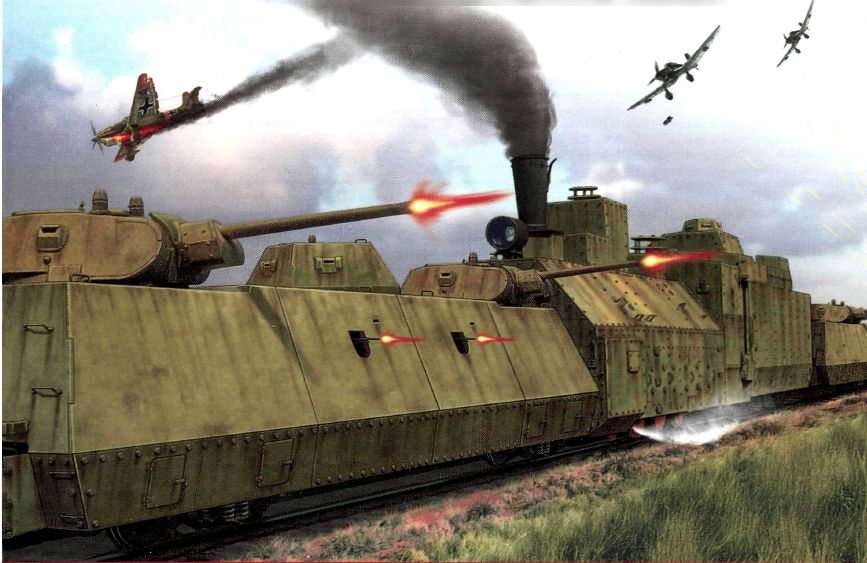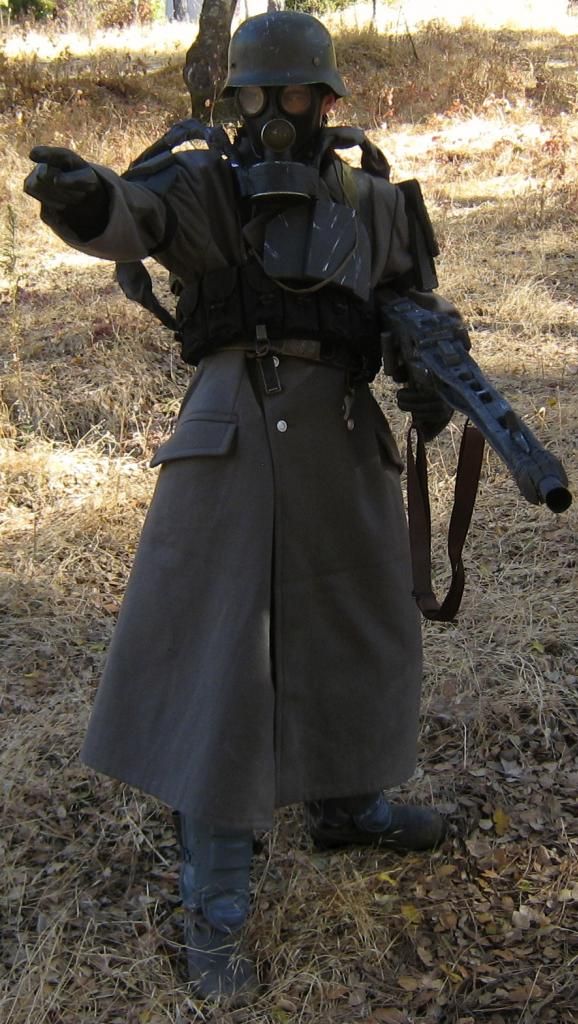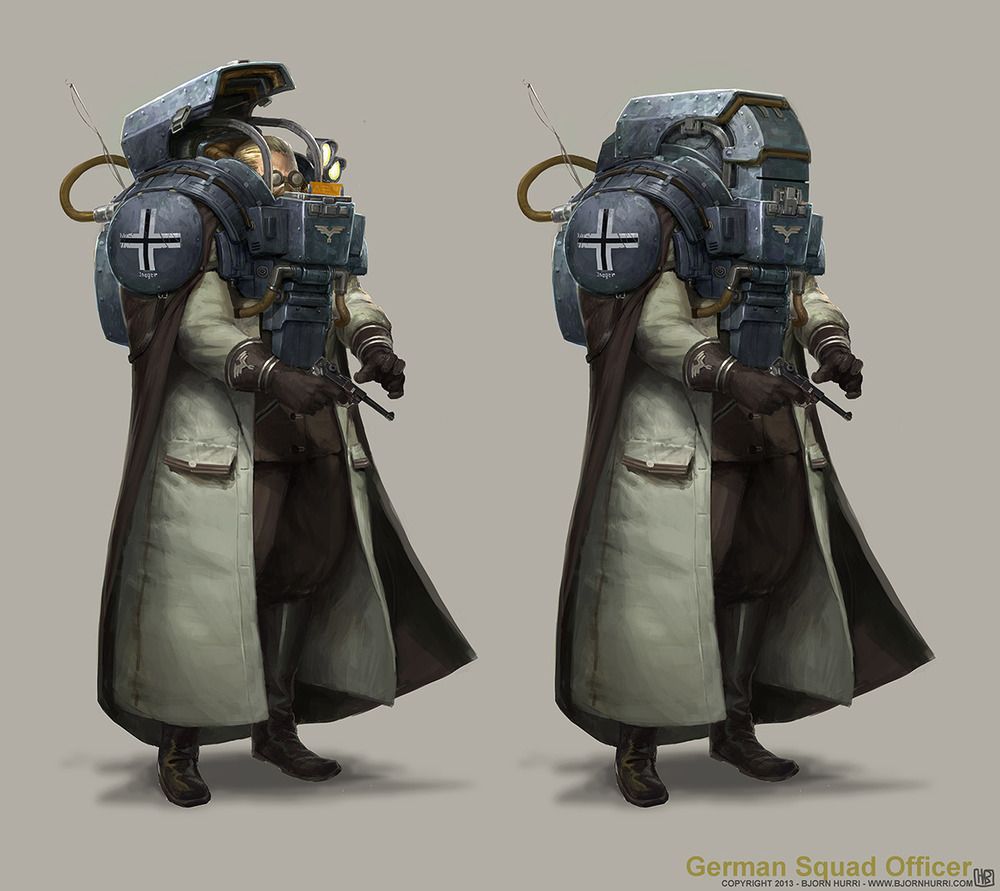 Noordelijk Bondsrepubliek Vakbonden/Northern Federal Republic of UnionsNation's History
Noordelijk Bondsrepubliek Vakbonden/Northern Federal Republic of UnionsNation's HistoryThe Federal Republic of Unions was founded just over twenty years ago as a wave of Syndicalist revolutions occurred in the north saw multiple governments in the region toppled and replaced by Syndicalist Republics. These revolutions began with the peaceful overthrow of the monarchist government in the Principality of Naarden where growing unrest within the country led to a referendum, which ended with the abdication. The lower classes of neighboring States took heart in the successful revolution of Naarden and took up their own attempts met with mixed success early on.
The first of these revolutions following the success in the Naarden was in the neighboring region of Flamardie where the far more aggressive defenders of the monarchists fought against the revolutionaries there. This was mirrored in Vallonia-Picardie where the similarly monarchist governments of the two regions made a pact to stop the spread of Syndicalism. The brutal conflict there only relented with the deaths of the two monarchs and the disillusion of their corrupt governments. In stark contrast to the brutality in the west, the revolutions in the east were relatively peaceful, with the peoples ousting the monarchs in Creußen, Elzach, and Lobenjun and the wealthy oligarchs in Denau and Rabenau.
Since the founding of the NFRU it's main goal has been the continued spread of Syndicalist values around the world. With similar communist revolutions occurring in nearby polities it has become a major focus of the Federal Republic's government to support them in any way they can. With the revolution in the Kingdom of Dereham the NFRU made it's first steps in arming and supporting revolutions in other countries.
RaceHuman majority. Officially the NFRU is multi-racial and accepts all peoples into it's arms. Numerous ethnic groups exist within the Republics, many of which sharing land with each other. These are the Naardeners, Picards, Flamards, Cournaille, Haldyr, and Hanzhans. Generally skin color remains light among all ethnicities, with fair hair being more common the farther east you go, most common in Hanzhans and Haldyr but seen in Naardeners frequently as well, with red hair being the majority among Cournaille.
Form of GovernmentThe NFRU is considered a Federal Republic, relying on a decentralized system of Republics unified under one federal government as a response to distrust of powerful, centralized government. This distrust has led to numerous checks and balances placed on the executive department's leader, the Proletariat General, and similar positions of power. At the individual Republic level democratic representation is given to all citizens, whom elect officials to represent them in the Congress of their individual Republic. Each individual republic itself has representation within the Federal Congress, based solely on their population.
The political position of Proletariat General is granted with the expectation that the incumbent will focus on the good of the Proletariat, not the state. In accordance with this, a Lieutenant Proletariat General is elected with similar powers who is to aid the Proletariat General in matters of foreign affairs so that the Proletariat General might focus on internal matters as his position requires.
An elected body of legislators and judiciaries exists in the form of the Proletariat Assembly which deals in law making and the enforcing of said laws for the Republics. Each Republic is given representation equivalent to their population, of which these officials will then vote on legislation. Said legislation may only become a law once the direct democratic process is taken to ratify the legislation in each Republic.
The Vergadering voor Sociale Harmonie, or Assembly for Social Harmony, is a further political body within the Federal Republic that has been on the rise as it's power base has expanded in recent years. A great deal of paranoia for political corruption has grown as political historians point to age of states having direct links to corruption within governments. In order to counteract this the legislature, with further ratification by direct vote, created the Assembly for Social Harmony with the intention of counteracting said possible corruption. An organization made up of lawyers, accountants, and self-repentant bureaucrats, ASH Inspectors regularly check in on branches of the Federal and Republican governments, doing complete inspections if need be, on the hunt for possible misuse of taxes or corruption. In the event of finding such discrepancies a force of well equipped enforces stand ready to enact sentences.
Current Leader(s)Proletariat-General Erasmus Koen Dreyer - The incumbent Proletariat-General Erasmus Dreyer hails from the metropolis of Venlo, the Capital of the Naarden Republic. Born of a lower middle class family back during the reign of Prince Damian van Haanrath, Erasmus joined the many protesters swelling the streets of the Principality's capital, demanding the abdication of the Prince just over twenty years prior. Although not instrumental or even necessarily important to the victory against Monarchism that was won in Naarden, the young revolutionary quickly traveled the embattled region of Flamardie where he fought against the brutal monarchist government forces fighting against revolutionaries there. He is most know for his fiery demeanor, born of being a revolutionary, but few would call him out as anything more than a proud citizen of the Federation. Several of his detractors, however, would claim this to be a character flaw expected of far more aggressive politicians.
Lieutenant Proletariat-General Erhard Brandt - The current Lieutenant Proletariat-General stands as Erhard Brandt, a ethnic Hanzhan hailing from the capital city of Emden in Denau. He was elected along with Erasmus and though not the first to hold his post has certainly been influential in the position. As with all Lieutenant Proletariat-Generals, Erhard is expected to focus on foreign affairs during times of peace to allow the Proletariat-General and the electorate the ability to focus on matters deemed more important: that of internal issues and focuses. To this goal, Erhard has filled the admirably, acting as the foreign minister and diplomat to other Syndintern Nations and those abroad. He is characterized by his cool demeanor and level headed nature when under stress.
Notable FiguresInspector General Marceline Lara Favreau - Marceline Lara Favreau is the current Inspector General of the ASH, a member of the old liberal, educated elite of Vallonia-Picardie before the abdication of Prince Damiaan. She was instrumental in the founding of ASH and was indeed it's first and only Inspector General since it's inception. The woman has since been the major power behind ASH, with her goals remaining the continued safeguarding of governance from corruption. She has been called cold and calculating by those who have seen her meteoric rise as telling and many point to similar organizations from Monarchist nations, citing that one step towards militancy is all ASH needs to become reminiscent of the militant arm of a fascist party.
Commandant General Ansgar Gehring - Ansgar Gehring is the aging Commandant General of the Federal Army and gained his position as a foreign fighter in Vallonia-Picardie during the brutal fighting that occurred there during the early days of the Federal Republic. The ethnic Haldyr, born of a small village in Lobenjun, gained notoriety in the conflict for his tactical know how, having claimed it's source being his father's earlier military career in the Monarchist Lobenjun's military. He was promoted to Colonel in the Vallonia-Picardie citizen's militia during the revolution and stepped down with the eventual disbanding of the militias, later commissioned the 23rd Lobenjun Landwehr as it's Colonel. It was soon after that the rapidly changing Federal Army put in the request for his transfer to Federal Command and request was made for him to serve as it's Commandant General, to which he accepted after several weeks of thought.
Commandant Admiral Denis Thys - Denis Thys is ethnic Flamard born in Naarden and is currently the Commandant Admiral of the Federal Navy. The man is old by all standards, having reached his seventieth year only several months ago, and is considered one of the last holds the old Monarchist regimes have on the Federal Republics. He was, at one point, a Captain within several monarchist navies with a long history of naval excellence. Throughout his career he became famed for his aggressive naval tactics which saw each and every one of the Monarchist navies succeed against the other, depending on whom he served with at the time. When the revolution occurred Thys was serving as a Captain aboard the Naarden warship, the HMS Vertrouwen, and although he was not a revolutionary himself he quickly picked the winning side in the matter. Lacking any naval officers of note he naturally became the Commandant Admiral of choice as numerous veterans of his campaigns expressed their trust in his abilities.
Commandant General Arzur Gwencalon - Arzur Gwencalon is the relatively young Commandant General of the Federal Air Corps and has garnered a following of loyal and exuberant pilots under his command. Ever since his service in Flamardie as a foreign fighter from Cournaille, Arzur has developed an air of adventure around him, often seen by the youth of the Federal Republic as a dashing sky captain. In fact, several children's stories have been written with a character by the name of Arzur, a dashing adventurer and captain of a sky-ship. In reality, Arzur Gwencalon has developed this mystique for a specific reason: his extroverted nature thrives on such attention. This alone has been pointed at as a reason for his retirement yet the youthful Commandant General has yet to even speak on the matter, let alone reply to such thoughts.
Damiaan Ferdinand Gerd van Haanrath, ex-Prince of Naarden - The famous ex-Prince of Naarden is Damiaan Ferdinand Gerd van Haanrath, eleventh of his line, remains a citizen of Naarden even after his abdication as Prince. A well known fact from before the revolution, Damiaan has always been one for ignoring the traditional responsibilities as a Prince, a fact that brought great displeasure to his much more traditionalist father. Throughout his years as Prince of Naarden he was known for shirking duties and escaping the Court to take part in much more enjoyable endeavors, most famously being his love of partying. When the revolution occurred in Naarden and the request for his abdication made, Damiaan accepted the demands of his people with little resentment. For his cooperation and relative kind treatment of his people whom were fed up with the system, less so the Prince himself, he was granted the right to keep much of his own personal wealth with productive lands and palatial estates being taken and put to proper use. Ever since he has remained in Naarden, surprisingly pleased with his station in life as a unique curiosity for the young children of the Republic. As he has reached his fifties a strange shift has shown itself in the populace: this ex-Prince had became a beloved symbol of Naardener history. Talks within Naarden have began determining the possibility of reinstating the title of Prince as a ceremonial, historical title and granting it to Damiaan. This has been met with harsh disagreement from the Republics of Vallonia-Picardie and Flamardie but, as is constitutional law, the right to decide is given to the people of the Republic he will be affecting.
Total Population<98 Million
Nation's Location: Nation's Geography:
Nation's Geography:As with much of the north, the Federal Republic consists of relatively sparse foresting along with highlands and expansive plains. Due to the clockwise turning gyre in the inland sea the Federal Republic remains generally temperate compared to nations at similar latitudes. The mountainous and hilly regions of the Federal Republic are known to hold vast mineral resources and are becoming more and more exploited as technology advances to levels necessary to efficiently put said resources to use.
Economy:One of the hallmarks of the International's revolutionary program is the Work Exchange, an organization by which unions come together to cooperatively manage the distribution of goods and services. There are Work Exchanges for cities, provinces, and regions, as well a Central Work Exchange for the NFRU as a whole.
At the level of the workplace, NFRU union frameworks vary. In liberated territory, almost all workplaces are either worker-owned/managed cooperatives or integrated into larger democratic bodies. Sometimes the union itself acts as the governing body of all its constituent workplaces, owning many workplaces with managers appointed by the central democratic representatives or elected themselves.
The economy of the NFRU focuses around the basic factors of production: agriculture, mining, quarrying all fall under the focus of the Republics. These industries have rapidly become industrialized in the past two decades as a Syndicalist state but factories focused on production with these materials are relatively infrequent, at least compared to their fellow members of Syndintern. This has allowed the NFRU economy to boom as it provides basic, necessary resources to their closest allies whilst also using materials at a decent rate.
Technology OverviewTechnology within the Federal Republic, ever since the successful revolutions in the north, has focused on infrastructure and the means of production. Militarily the NFRU see's a focus on artillery and air technology, as well as a reliance on lighter warships such as destroyers and submarines. As of recently early forays into possible legged designs to supplant traditional tracked and wheeled vehicles have been made.
Military OverviewPopulation
3% total - 2,850,000 Personnel
The Army of the Federal Republic is a relatively small standing force that is noted for it's high level of professionalism and the quality of their equipment. Based on the desire not to see the massive standing armies usually wielded by Monarchist nations as a fearsome weapon to hold over the peoples, the AFR was developed to be as small as possible whilst still being able to protect the interests of the Republics. In order to reach this goal the idea of a professional, well-equipped military came into mind during the early days of the Republic, taking pieces of old doctrines from the monarchist militaries bested in the revolutions to develop it's own. Standard military doctrine places high emphasis on overwhelming firepower in the face of numerically superior foes. To accomplish this, a focus on artillery and air-support became the norm, with infantry forces deployed as mechanized support for a slowly advancing, implacable line of artillery. A supplemental force of well equipped volunteer militias in the form of the Landwehr can be called up with the permission of their home republic's government to greatly bolster the numbers of the professional army. A total of 1,000,000 active personnel serve in the Army as of the most recent census. In order to fill gaps in it's military doctrine the Federal Army is known to use vehicles and equipment of other Syndintern nations.
Federal InfantryThe standard Federal Infantryman is a professional, volunteer soldier; many of whom are veterans of the recent conflict in Dereham. Standard uniform consists of a pair of jackboots, trousers, an undershirt, a cold-weather coat, canvas ammunition webbing, hauling pack, one helmet, chemical weapon protective gear (gas-mask, filter box, goggles, etc.), and camouflage poncho. The standard uniform varies in coloration depending on the area of deployment but generally comes in a grey-brown or dark-blue. In some cases camouflage uniforms have been adopted, usually within assault battalions and other infantry units expected to fight the enemy face to face in hostile territory. An infantryman could be expect to be given a Type-45 Semi-Automatic Carbine, several grenades, a standard entrenching tool, a multi-purpose combat knife, and a Type-02 Sidearm. Specialist infantry can be seen carrying Type-12 Submachine Guns, Type-26 Automatic Rifles, Type-59 Light Machine Gun, and Type-94 Anti-Tank Rifles. Federal Infantrymen are frequently deployed as defensive lines to protect advancing artillery or occasionally as support for tank columns. Beyond this, several mechanized shock-assault regiments exist within the Federal Army.
Republican LandwehrStanding in support of the Federal Infantryman are the Landwehr, volunteer citizen militia that are funded and equipped by the Republic from which they hail. As required by the Federal Republic's constitution, each Republic constituting the Federation is expected to maintain a fully functioning militia made up of only volunteer infantry. These forces are further funded by Federal grants in order to keep them to the strict requirements expected of them by Military Command. These Landwehr regiments exist within the Federal Army's hierarchy as irregular auxiliaries who support the professional army when needed. As stated by the constitution, in order to deploy Landwehr regiments the Federal government must first request permission from the Republic's government, only with it are they allowed to fully constitute the Landwehr into the Army's command. During this time the Federal Government takes over full responsibility over the Landwehr Regiment, now expected to supply, fund, and equip the Landwehr forces wholly until they are returned to their respective Republic.
Federal Assault SappersThe famed Federal Assault Sappers constitute the elite of the Federal doctrine, a class of infantry all on their own that have garnered a fearsome reputation as the best the Federal Military has to offer. In accordance with the Implacable Advance doctrine of the Federal Military, the Assault Sappers are the combat engineers that support the brutal advance of the Federal Lines, using their skill with high explosives and combat savvy to clear anything from razor-wire to cement fortifications. As is expected of such close support elements, the Assault Sappers gained their name due to the perceived ferocity of their attacks. Each one of them carries numerous close quarters encouterments, frequently coming in the form of standard issue Type-12a submachine guns, Type-02b Sidearms, and assortments of hand-to-hand combat accessories. Unlike the majority of the Federal Infantry, the Sappers are issued an armored steel cuirass designed with the intention to deflect bullets away from the head and body. It's use, however, is not considered necessary and it is left up to the individual Sapper whether they desire to done it in battle or not. Ever since the successful revolution in the Dereham Republic the reputation of the Assault Sappers has only gained in notoriety, most notably their official required training at the Gezamenlijke Speciale Tactiek Opleidingsschool (Joint Special Tactics Training School). The GSTO trains both Federal Assault Sappers and Dereham Grenadier Guard together, both having become some of the most elite forces the world has ever seen from this intense regime of joint training.
Type-121a "Vooruitgang" Diesel-Electric Powered HardsuitThe product of an ongoing project undertaken by the Federal Army Research and Development department and now jointly with Syndintern military scientists, the Type-121a Vooruitgang Hardsuit represents the earliest forays by the Federal Military into the world of advanced infantry armor. Originally developed with the idea of being used for logistics purposes, the powered Hardsuit was quickly reimagined as a powerful defensive and offensive tool. Featuring state of the art servo-motors powered by advanced diesel-electric engines, the Hardsuit grants the pilot increased survivability and strength in hostile situations. Taking full advantage of the greatly increased carrying capacity and the suit's in-built hydraulics originally designed to aid with lifting heavy loads, the Vooruitgang is mounted with a variety of heavy weapons to support the Federal Army's doctrine of the slow, implacable advance. Though heavy, unwieldy, expensive, and resource intensive the Vooruitgang has been praised for giving a single infantryman the firepower of a light tank, allowing severely outnumbered Federal Forces to defeat clearly numerically superior foes. A shoulder mount is designed to carry either twin Type-74 .50 Caliber HMGs, a single 20mm Autocannon, or a belt-fed Type-98 Anti-Tank Rifle. Supplementing this already fearsome loadout are two pairs of belt-fed Type-12a SMGs mounted inside the gauntlets of the Hardsuit. As of recently the idea has been expressed to convert the Vooruitgang into a mobile flamethrower, with such weapons replacing all three weapon-mounts; currently only several tests have been made in this direction.
Type-27 "Voorrijder" Infantry Fighting VehicleIn an effort to retain an effective response force within the lumbering Federal Army, the Voorrijder IFV was produced with the intention of creating a functional and effective fast attack vehicle that could serve multiple roles both on and off the battlefield. After nearly a year of development the Voorrijder proved itself to be the best option in a list of potential candidates. It's designers specifically created the Voorrijder to be incredibly versatile, sporting four-wheel drive and an advanced suspension system that allowed it to function on and off road. Furthermore, mounted on the top of the vehicle was an armored turret that could be armed with a number of support weapons, generally fitted with the Type-73a Heavy Machine Gun. As an added feature, this turret can be removed on the production line and replaced with a larger crew compartment, allowing the Voordijder to comfortably carry a compliment of six infantry, incidentally the standard deployment numbers for Infantry fireteams.
Type-62 "Aanvaller" Medium TankThe Type-62 Aanvaller is the posterchild of the Federal Army, a symbol of it's implacable advance and considered by the Federals to be a tank unmatched in it's weight class and designation. The Aanvaller pushes the of what can be reasonably called as Medium tank with his size, weight, and gun; all of which could be expected on a tank designated as a Heavy Tank. Notable features of the Aanvaller are it's relatively low to the ground shape, it's surprising mobility, and the weapon compliment. Numerous further enhancements have been made both on and off the field, most notably and common being trackguard armor extending from the tank itself, reducing turn speeds but greatly decreasing the risk of tracks being damaged by incoming enemy fire. As for firepower, the Aanvaller sports a fearsome 120 millimeter smoothbore cannon and two Type-74 .50 Caliber machine guns (one coaxial, one turret mounted).
Type-95 "Beleger" Self-Propelled ArtilleryThe mainstay of the Federal Army's siege doctrine, the truly immense Beleger Siege-Gun is a sight to behold. Deployed en-masse in support of more traditional vehicle-drawn artillery pieces, the Beleger is renowned for it's truly humbling firepower. Created with the idea of making a mobile, modular Self-Propelled Artillery piece, the Beleger has several features that distinguish it from notable other SPGs. Most notably is the articulated loader crane which can feed the heavy shells into the breach of the main gun as fast as twice a minute. Although capable of deploying with a number of guns that must be fitted in warehouses equipped with cranes capable of lifting the massive barrels, the standard armament is a cut-down version of 16"/50 Smoothbore Naval Gun devised know as the Siege Mortar. The huge barrel and the terrifyingly massive shell fired by the Siege Mortar can level buildings with horrifying ease, reducing all but the most fortified positions to rubble. The Beleger suffers greatly at it's own mobility, however, and remains woefully unable to protect itself from infantry advances.
Type-100 "Veroveraar" Infantry Fighting WalkerA representation of things to come, the Type-100 Veroveraar IFW is one of the many prototypes undergoing production within the Federal Republics with the intention of expanding the capabilities of the Federal Army through technological advancement. One of several current joint-projects between the Federal Republics and Syndintern incorporating multi-legged designs in lieu of traditional tracks or wheels, the Veroveraar is only now beginning to see deployment with infantry regiments within the Army. The all-terrain vehicle is designed for rough terrain where Voorrijders would be either inefficient or incapable of deploying and has been noted for it's effectiveness in city-fighting, especially after artillery barrages have leveled the city to ruins. The Veroveraar sports a decent armament for it's designation, bearing a 30mm autocannon mounted on a turret jutting from the top of the front compartment. A secondary Type-74 .50 Heavy Machine Gun coaxial mount resides beside the autocannon, with a coaxial Type-74 mounted besides the driver. The rear compartment is designed to carry a compliment of six men whom service the weaponry in the rear compartment when embarked. These armaments consist of two infantry mortars and a pair of Type-59 Light Machine Guns.
Type-90 "Vroegtijdig" Super Heavy Self-Propelled ArtilleryThe larger, deadlier relative of the Veroveraar IFW comes in the form of the Type-90 Vroegtijdig Self-Propelled Artillery. Following a similar design plan as the Veroveraar, the Vroegtijdig is built with the goal of producing an all-terrain artillery piece capable of keeping pace with an advancing infantry line no matter what is in the way. As the project continued it became increasingly apparent that the design was to be redesignated as a Super-Heavy variant due to it's immense weight and the increasing size of the gun mounted on the chassis. The Vroegtijdig's current iteration remains a prototype in the eyes of command and has seen only limited action; as such, the exact details of the model are still up for modification. As it stands, the Vroegtijdig contains a forward crew compartment capable of housing a team of ten men, even containing several cots and a small living space when in transit to new locations. The rear compartment carries the gun, the engine, and the magazine. The gun itself remains as a 16"/50 Smoothbore Naval Gun, the unmodified version of the siege mortar found on the Beleger. This gives the Vroegtijdig titanic firepower whilst also wielding the range of it's naval-mounted brethren. Currently there are very few in the field and only for prototype field testing.
The Navy of the Federal Republic has a storied history born of the long time maritime history of many coastal nations now making up the numerous republics, most notably the Hanzhan states of Denau and Rabenau. Lacking the massive shipyards required to produce true battleships and super-carriers seen in other navies around the world, the Federal Navy has put a focus on a doctrine of commerce raiders and similar vessels. This doctrine became especially potent with the perfection of the submarine which has become the dominant vessel designation within the Federal Republic alongside the Destroyer, Frigate, and Light Carrier. A further focus on Naval Aviation is seen within the Federal Navy as the need to use naval assets in support of Army advances has become more and more common as the Federal Republic looks to solidify it's hold on the inland sea. As of late the inland sea has become plagued with Federal Warships, especially submarines, the ships prowling the open seas hunting for pirates and other threats to the Federal Republic's sovereignty. Based on current estimates the Federal Navy has 1,250,000 active personnel. As of recently the Federal Navy has begun using warships of other Syndintern Nations.
Federal MarinesTo support the Navy in all endeavors it was clear that some sort of military body was necessary to fill the role of maritime infantry frequently seen in militaries around the world. This came in the form of the Naarden Royal Marines, an elite military force that had served underneath the Princes of Naarden for generations. Known for it's crack skill and fortitude under pressure, the Royal Marines were reconstituted into the Republican Marines rapidly once the Prince of Naarden abdicated. Though veterans did resign with the change of governance, this was notably the minority and a significant number of veterans remained with the Federal Marines to help mold it into what it is today. Embracing the system completely, the Republican Marines quickly became the Federal Marines with the founding of the NFRU, and their doctrine became standard for all Maritime Infantry within the Federal Republics. These rough and tumble marines are now found protecting Naval assets either on the sea or off of it and are similarly equipped to their Infantry brothers with a greater reliance on submachine guns and similar light, close quarters weaponry.
Type-42 "Dagvlieg" OnderzeerbootThe Type-42 Dagvlieg Onderzeerboot is known as the workhorse of the Federal Navy. The vessel remains one of the smaller of the O-Boats currently active within the Federal Navy and as such has been used to complete any role that is considered to be overkill for the Type-48. Due to it's smaller size the Dagvlieg is easily mass produced in comparison to the larger Draak and is still able to boast a formidable arsenal. The crew compliment of the vessel stands at fifty officers and ratings and is capable of undertaking missions on it's own or within a squadron of other vessels. Unlike the Draak, however, the Dagvlieg is not expected nor designed to remain on it's own for prolonged periods of time and as such requires refueling and resupplying up to twice a month when operating at peak consumption. Much like it's larger relative the Dagvlieg is designed to be functional both above and below the water, sporting two twin Type-74 HMGs for anti-air purposes. As well as this, the Dagvlieg is mounted with enhanced radar equipment on the command deck so that it might complete it's intended role as a commerce raider and submarine hunter. It's weapon compliment for such missions consists of four forward facing torpedo bays.
Type-48 "Draak" OnderzeerbootFeared and respected as the staple of the Federal Navy, the Type-48 Draak Onderzeeerboot is a submarine of great renown. The sleek warship is known for it's great size compared to most submarines and is indeed more akin to a frigate in size than a submarine. The Draak remains functional with a crew of over two hundred men and contains all the proper quarters and compartments necessary for long-term missions abroad with little to no refueling sorties taken. One of the most notable features is it's armored prow designed for ramming other vessels, using the ships considerable mass and powerful engines to do serious damage to enemy vessels. This tactic is seldom used and is more of a traditional design found on most Hanzhan designed vessels. When surfaced the Draak sports a half-dozen anti-aircraft deckguns as well as three 8 inch guns. On the lower decks the Draak boasts a total of eight forward facing torpedo bays, capable of firing all at once or one at a time.
(More to come)
The Air Corps of the Federal Republic represents the air superiority wing of military aviation within the Federal military and as such is armed with the proper aircraft to accomplish this task. The Federal Air Corps was built to be reminiscent of the Air Corps of the Revolutionary Guard, veterans of the Vallonia-Picardie and Flamarde revolutions joining the Federal military with an insistence that air power decisively wins wars. Although not as fervent as many of the veterans, the Federal Military quickly jumped on the Revolutionary Guard Air Corps design, modelling it after the famed force. However, a distinct difference in doctrines saw the Federal Air Corps take up a different role entirely. With close air-support taken over by either Army or Naval Aviation, the Federal Air Corps has taken on the role of dominating the skies entirely. This goal of air superiority stems from military command's doctrine of the implacable advance, it's perceived greatest weakness being to dominant air powers. As well as Federal designs, the Air Corps frequently uses aircraft from other Syndintern Nations. Current estimates put military personnel active in the Air Corps at 600,000.
Type-39 "Roofvogel" Fighter-BomberA fearsome reputation comes with the Type-39 Roofvogel Fighter Bomber as one of the most effective air superiority fighters in the Federal Air Corp's arsenal. The Roofvogel was originally designed with the purpose of targeting enemy infrastructure and fortifications with it's payload of high-explosive ordinance. It's service with both Federal Army and Naval aviation has proven itself to be highly functional at this role, armed with bombs or torpedoes and racking up a high success rate due to it's sturdy and resilient construction being able to handle the worst ground defenses can throw at it. In it's role as a dog fighter the Roofvogel suffered from several drawbacks during it's early iterations, most notably the weight of it's armor and armament slowing it down considerably. However, with years of training came an understanding of how to put such aircraft to proper use. The Roofvogel has since been used by veteran pilots to dive on enemy aircraft, using it's weight and powerful arsenal to dive fast and deal horrendous damage to enemy craft. It's maneuverability has since increased with wing modifications that decrease drag in the turn, allowing for this tough fighter to keep pace and in turn with lighter opponents.
(More to come)
"I read that mess, can we start already!?"



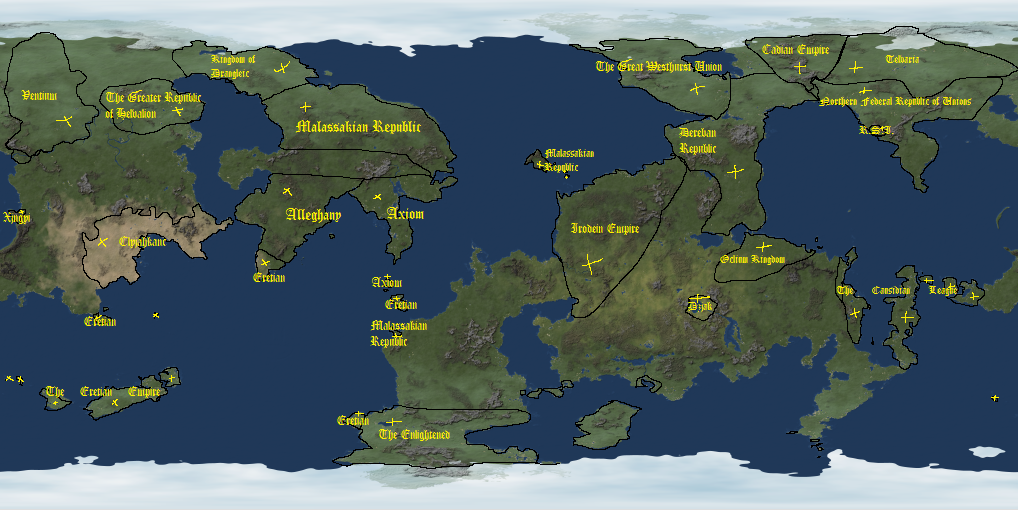




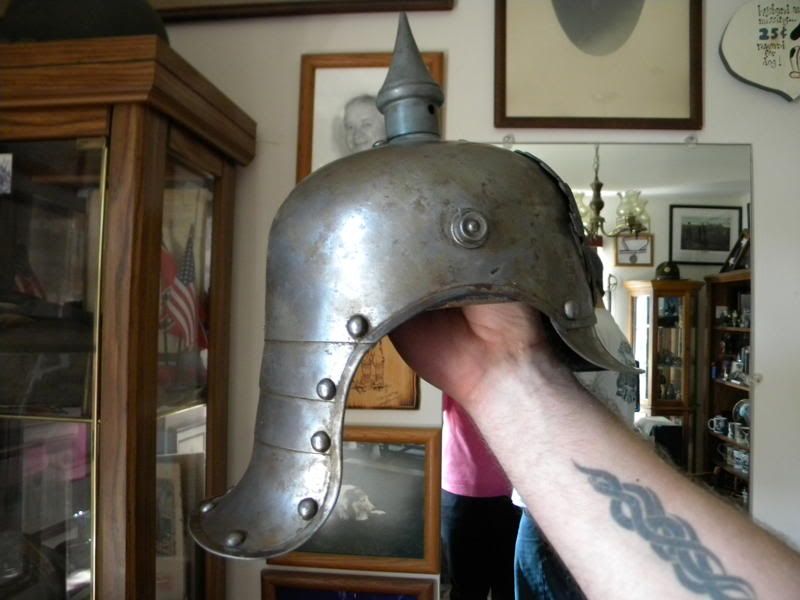



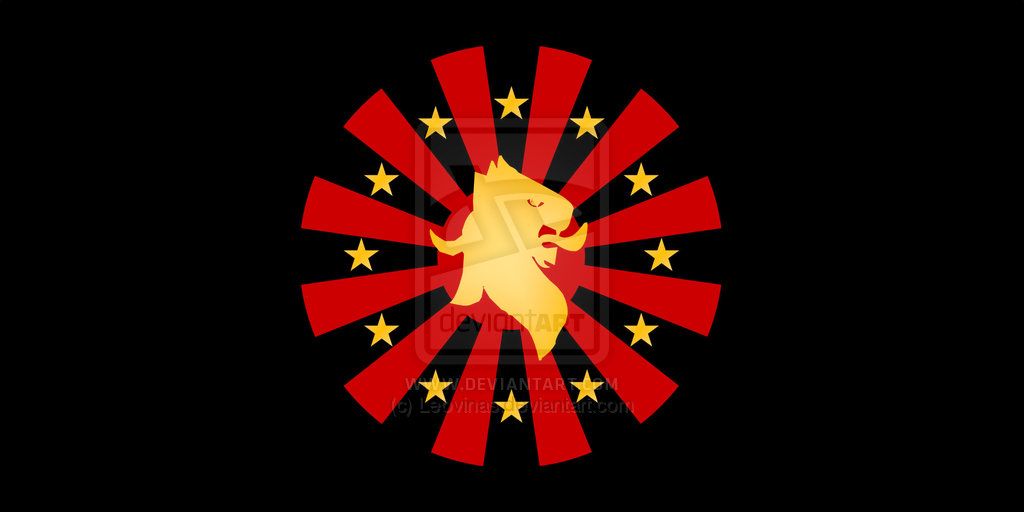
 The Unions personal history is quite short, for it came only into existence roughly 45 years prior to this day, yet it has seen many rulers, and many nations rise and fall, such is the life of a world which doesn't quite comprehend what they hold in their hands. The Union acts both as the peacekeeper of its neighbors and stops only being a protector when it's railway influence is at an end. The Union also acts as a monarch for their local region, taking in taxes in order to continue protect its producers and tax paying nations, this has been the life of The Westhurstian Union for its entire existence, and whilst no man is happy to go to war, the army men are simply getting both bored and reckless without combat. The History of the Union prior to it's above state installment was a time of constant conflict between 20, or so, neighboring small countries, through the Gustavian Reformation there was peace, and during this peace the united governance was installed in the face of the Union. A couple of years after that a military coup was launched to overthrow the harmonizing fool of a leader that was Christina Algeinz, with her death the installment of the Stratocracy was easy, and the military took supreme authority for the union, whilst the quality of life has increased gradually with the military state installed, the life of a poor is by no means kind.
Therefore, whilst the Union only has existed for rougly 45 years, it has managed to cement itself dominant in the region which it holds it's influence, further beyond it's national borders.
The Unions personal history is quite short, for it came only into existence roughly 45 years prior to this day, yet it has seen many rulers, and many nations rise and fall, such is the life of a world which doesn't quite comprehend what they hold in their hands. The Union acts both as the peacekeeper of its neighbors and stops only being a protector when it's railway influence is at an end. The Union also acts as a monarch for their local region, taking in taxes in order to continue protect its producers and tax paying nations, this has been the life of The Westhurstian Union for its entire existence, and whilst no man is happy to go to war, the army men are simply getting both bored and reckless without combat. The History of the Union prior to it's above state installment was a time of constant conflict between 20, or so, neighboring small countries, through the Gustavian Reformation there was peace, and during this peace the united governance was installed in the face of the Union. A couple of years after that a military coup was launched to overthrow the harmonizing fool of a leader that was Christina Algeinz, with her death the installment of the Stratocracy was easy, and the military took supreme authority for the union, whilst the quality of life has increased gradually with the military state installed, the life of a poor is by no means kind.
Therefore, whilst the Union only has existed for rougly 45 years, it has managed to cement itself dominant in the region which it holds it's influence, further beyond it's national borders. The man with the absolute greatest rank would either be:
[*]Grand General of the Army Krux Wilheilm Milze, or...[/*]
[*]Supreme Commander of the Fleet, Albert Midledurf.[/*]
The man with the absolute greatest rank would either be:
[*]Grand General of the Army Krux Wilheilm Milze, or...[/*]
[*]Supreme Commander of the Fleet, Albert Midledurf.[/*]
 [*]The Military Council/High Command.[/*]
[*]B(lack)G(uard) Commander Keifer Streiz.[/*]
[*]Heilich Operator Wilhelmdorf.[/*]
[*]Keinung Operator Heiner.[/*]
[*]The Military Council/High Command.[/*]
[*]B(lack)G(uard) Commander Keifer Streiz.[/*]
[*]Heilich Operator Wilhelmdorf.[/*]
[*]Keinung Operator Heiner.[/*]
 173,560,013.
[/center]
173,560,013.
[/center]
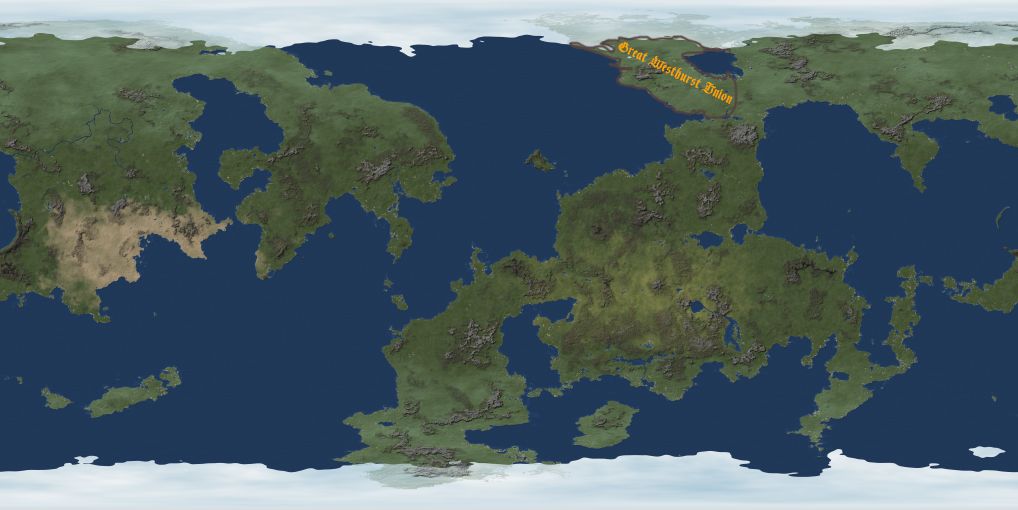
 The military of the Great Unions command focuses most certainly on the ground combat, but second after they focus greatly on the research side of thing, this task being taken on by the airforce branch of the entire nation, leaving them without adequate flying machines, but due to the location of their cities within the confines of great and grand ravines, they believe that they have countered this affect by both that, and setting up a very well functioning anti-aircraft net out and about the union. The unions military policy is Scorched Earth mixed with a more modernized Hammer and Anvil strategy utilizing infantry and highly accurate artillery fire laid down from either railway fortresses, or more distant, high caliber artillery positions.
The infantry of the Great Union rely heavily on their very hardened and highly effective body armor for their defense against the enemy, whilst it can be destroyed like anything else, it requires more effort to be retorted and distorted to the point of not working any longer. This armor can be utilized because of the Kalarians natural strenght. Whilst the Great Union hardly have any armored vehicles to speak of, they do have different degrees of body armor, all which serve different roles that tanks serve as well.
The Infantry utilizes Sudden Deployment maneuvers to win the tide of battle, travelling on massive armored railway transports, they deploy and lay down fire on their enemies as quickly as they enter their influence, with the massive amount of fire, they believe that Sudden Deployment and Bullet Swarming is a very effective tactic in order to make the enemy flee their sight. But if the enemy is determined then there will always be a railway fortress in the distance, ready to fire its cannons, whilst nowhere as devestating as the Keinung, the regular railway fortresses of the Great Union are no thing to relaxe about, acting as land battleships, they can punish to great deals.
Population:
6%
The military of the Great Unions command focuses most certainly on the ground combat, but second after they focus greatly on the research side of thing, this task being taken on by the airforce branch of the entire nation, leaving them without adequate flying machines, but due to the location of their cities within the confines of great and grand ravines, they believe that they have countered this affect by both that, and setting up a very well functioning anti-aircraft net out and about the union. The unions military policy is Scorched Earth mixed with a more modernized Hammer and Anvil strategy utilizing infantry and highly accurate artillery fire laid down from either railway fortresses, or more distant, high caliber artillery positions.
The infantry of the Great Union rely heavily on their very hardened and highly effective body armor for their defense against the enemy, whilst it can be destroyed like anything else, it requires more effort to be retorted and distorted to the point of not working any longer. This armor can be utilized because of the Kalarians natural strenght. Whilst the Great Union hardly have any armored vehicles to speak of, they do have different degrees of body armor, all which serve different roles that tanks serve as well.
The Infantry utilizes Sudden Deployment maneuvers to win the tide of battle, travelling on massive armored railway transports, they deploy and lay down fire on their enemies as quickly as they enter their influence, with the massive amount of fire, they believe that Sudden Deployment and Bullet Swarming is a very effective tactic in order to make the enemy flee their sight. But if the enemy is determined then there will always be a railway fortress in the distance, ready to fire its cannons, whilst nowhere as devestating as the Keinung, the regular railway fortresses of the Great Union are no thing to relaxe about, acting as land battleships, they can punish to great deals.
Population:
6%